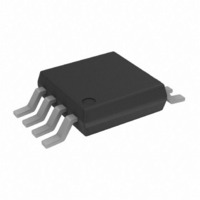AD8202YRMZ Analog Devices Inc, AD8202YRMZ Datasheet - Page 16

AD8202YRMZ
Manufacturer Part Number
AD8202YRMZ
Description
IC AMP DIFF 50KHZ 8MSOP
Manufacturer
Analog Devices Inc
Specifications of AD8202YRMZ
Slew Rate
0.28 V/µs
Amplifier Type
Differential
Number Of Circuits
1
Gain Bandwidth Product
50kHz
Current - Input Bias
40nA
Voltage - Input Offset
2000µV
Current - Supply
250µA
Voltage - Supply, Single/dual (±)
3.5 V ~ 12 V
Operating Temperature
-40°C ~ 125°C
Mounting Type
Surface Mount
Package / Case
8-MSOP, Micro8™, 8-uMAX, 8-uSOP,
No. Of Amplifiers
1
Input Offset Voltage
2mV
Gain Db Max
20dB
Bandwidth
50MHz
Supply Voltage Range
3.5V To 12V
Supply Current
250µA
Amplifier Case Style
MSOP
No. Of Pins
8
Lead Free Status / RoHS Status
Lead free / RoHS Compliant
Output Type
-
Current - Output / Channel
-
-3db Bandwidth
-
Lead Free Status / RoHS Status
Lead free / RoHS Compliant, Lead free / RoHS Compliant
Available stocks
Company
Part Number
Manufacturer
Quantity
Price
Part Number:
AD8202YRMZ
Manufacturer:
ADI/亚德诺
Quantity:
20 000
AD8202
HIGH LINE CURRENT SENSING WITH LPF AND
GAIN ADJUSTMENT
Figure 49 is another refinement of Figure 2, including gain
adjustment and low-pass filtering.
BATTERY
A power device that is either on or off controls the current in
the load. The average current is proportional to the duty cycle
of the input pulse and is sensed by a small value resistor. The
average differential voltage across the shunt is typically 100 mV,
although its peak value is higher by an amount that depends
on the inductance of the load and the control frequency. The
common-mode voltage, conversely, extends from roughly 1 V
above ground for the on condition to about 1.5 V above the
battery voltage in the off condition. The conduction of the
clamping diode regulates the common-mode potential applied
to the device. For example, a battery spike of 20 V can result
in an applied common-mode potential of 21.5 V to the input
of the devices.
To produce a full-scale output of 4 V, a gain ×40 is used,
adjustable by ±5% to absorb the tolerance in the shunt.
Sufficient headroom allows 10% overrange (to 4.4 V). The
roughly triangular voltage across the sense resistor is averaged
40LOG (f
Figure 48. Comparative Responses of 1-Pole and 2-Pole Low-Pass Filters
2
/f
1
14V
)
NC = NO CONNECT
CLAMP
DIODE
Figure 49. High Line Current Sensor Interface;
A 1-POLE FILTER, CORNER f
A 2-POLE FILTER, CORNER f
THE SAME ATTENUATION –40LOG (f
AT FREQUENCY f
Gain = ×40, Single-Pole, Low-Pass Filter
FREQUENCY
POWER
DEVICE
20dB/DECADE
4-TERM
SHUNT
f
1
INDUCTIVE
LOAD
COMMON
2
2
/f
1
+IN
–IN
f
AD8202
GND
2
NC
1
2
, AND
, HAVE
+V
5V
A1
S
40dB/DECADE
C
5% CALIBRATION RANGE
f
(0.22μF FOR f
C
2
OUT
A2
(Hz) = 0.796Hz/C(μF)
/f
1
V
NULL
)
f
OS/IB
2
2
/f
1
C
191kΩ
20kΩ
= 3.6Hz)
OUT
4V/AMP
Rev. D | Page 16 of 20
by a 1-pole low-pass filter, set with a corner frequency of 3.6 Hz,
providing about 30 dB of attenuation at 100 Hz. A higher rate of
attenuation can be obtained using a 2-pole filter with f
as shown in Figure 50. Although this circuit uses two separate
capacitors, the total capacitance is less than half that needed for
the 1-pole filter.
DRIVING CHARGE REDISTRIBUTION ADCS
When driving CMOS ADCs, such as those embedded in
popular microcontrollers, the charge injection (ΔQ) can cause
a significant deflection in the output voltage of the AD8202.
Though generally of short duration, this deflection can persist
until after the sample period of the ADC expires due to the
relatively high open-loop output impedance (typically 21 kΩ)
of the AD8202. Including an R-C network in the output can
significantly reduce the effect. The capacitor helps to absorb the
transient charge, effectively lowering the high frequency output
impedance of the AD8202. For these applications, the output
signal should be taken from the midpoint of the R
combination, as shown in Figure 51.
Because the perturbations from the analog-to-digital converter
are small, the output impedance of the AD8202 appears to be low.
The transient response, therefore, has a time constant governed
by the product of the two LAG components, C
values shown in Figure 51, this time constant is programmed at
approximately 10 μs. Therefore, if samples are taken at several
tenths of microseconds or more, there is negligible charge
stack-up.
BATTERY
4
+IN
–IN
5V
Figure 51. Recommended Circuit for Driving CMOS A/D
14V
NC = NO CONNECT
CLAMP
6
DIODE
A2
10kΩ
10kΩ
AD8202
Figure 50. 2-Pole Low-Pass Filter
POWER
DEVICE
4-TERM
SHUNT
2
5
INDUCTIVE
LOAD
COMMON
R
1kΩ
LAG
+IN
–IN
0.01μF
C
AD8202
LAG
GND
NC
+V
5V
A1
S
C
f
(0.05μF FOR f
C
OUT
MICROPROCESSOR
LAG
A2
(Hz) = 1/C(μF)
127kΩ
× R
LAG
A/D
C
LAG
C
− C
C
= 20 Hz,
432kΩ
. For the
50kΩ
= 20Hz)
OUTPUT
LAG













